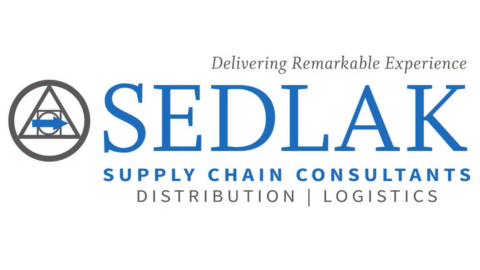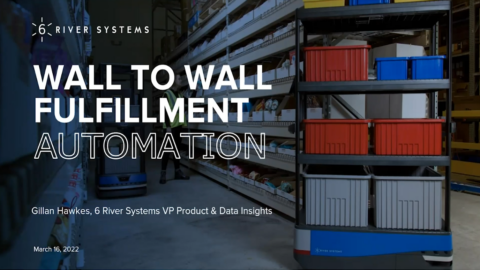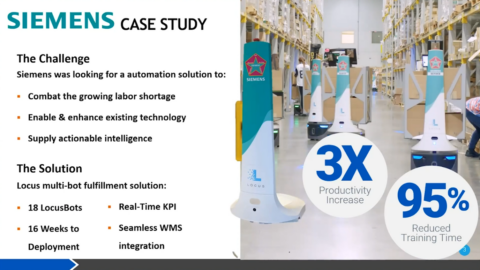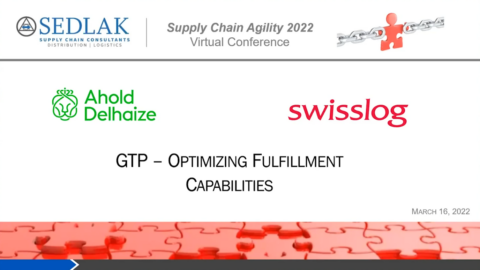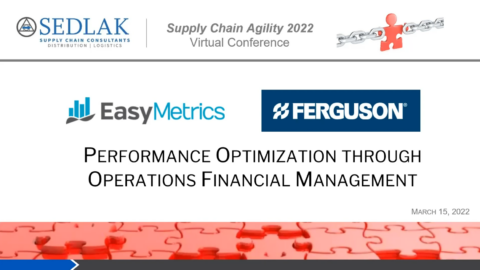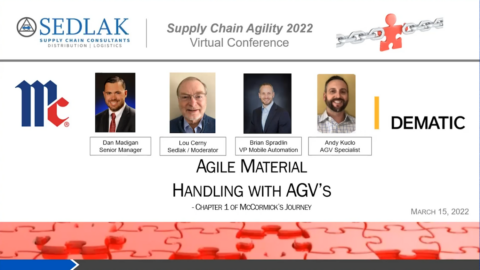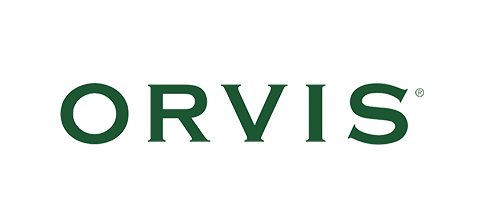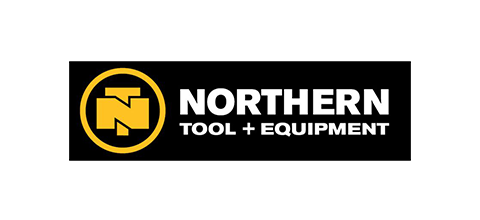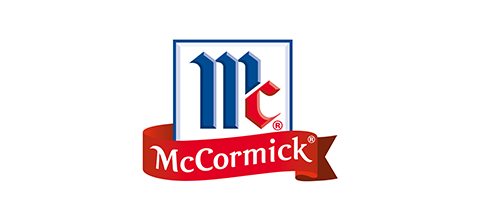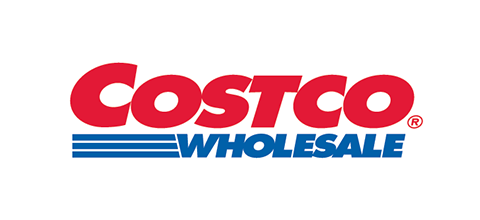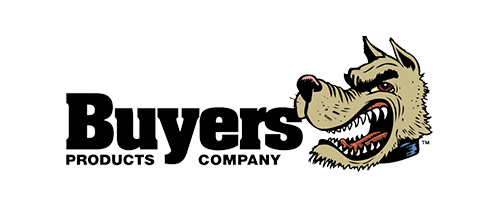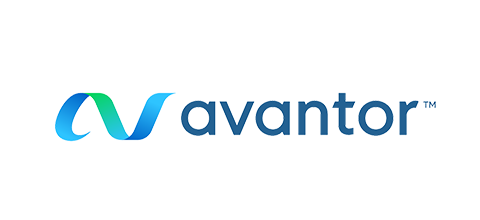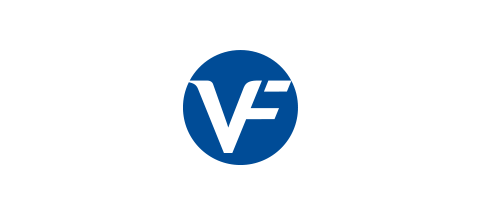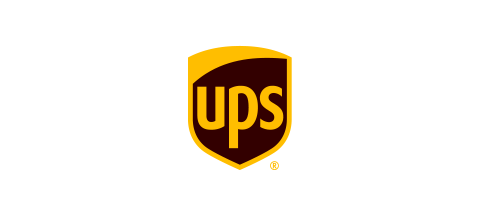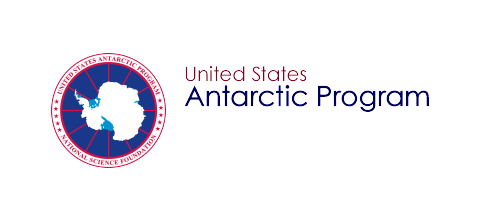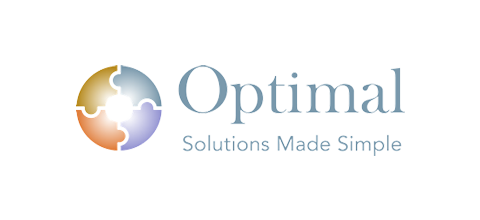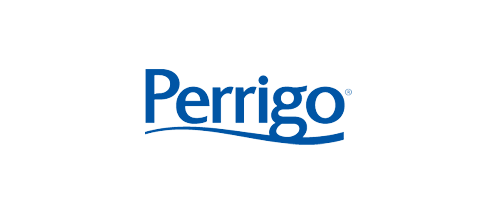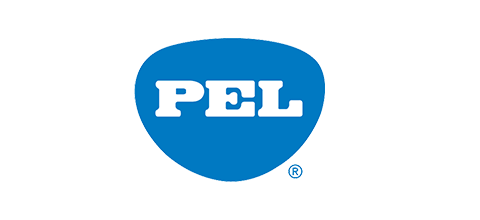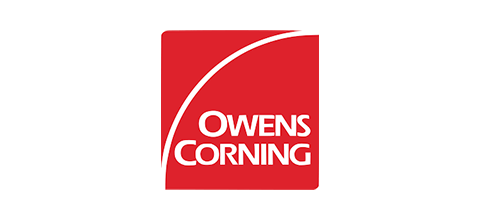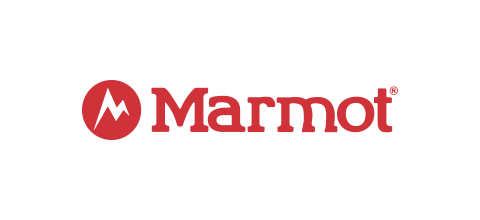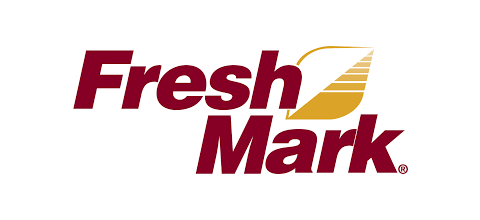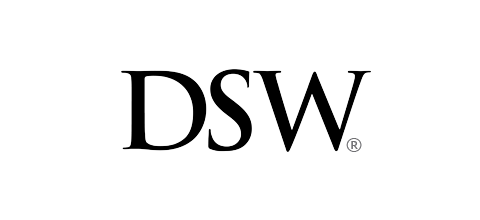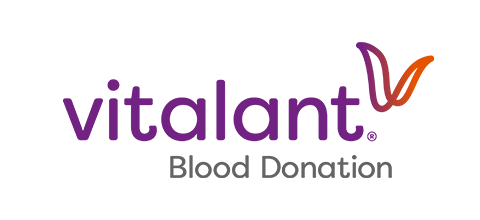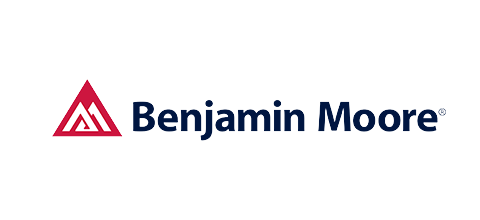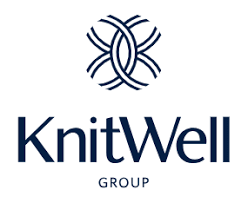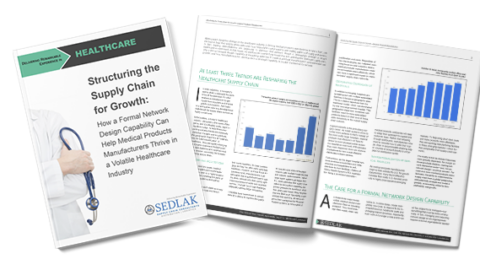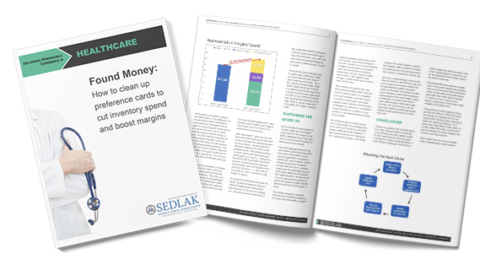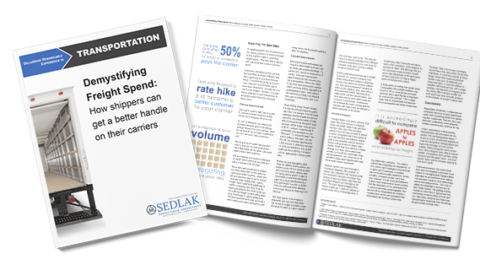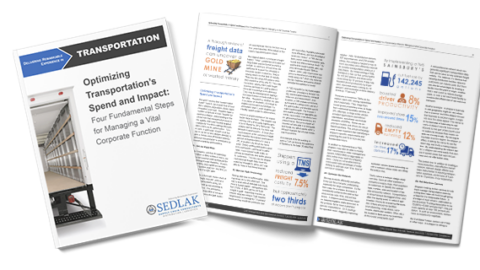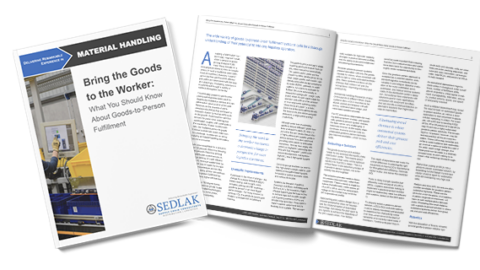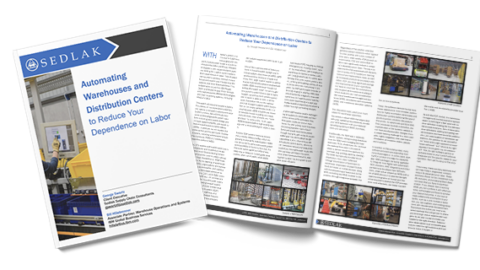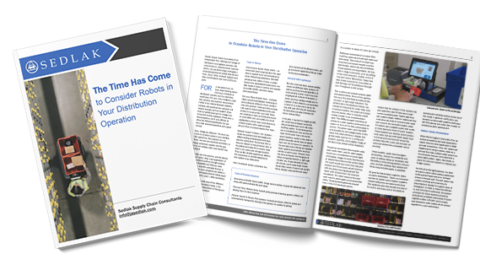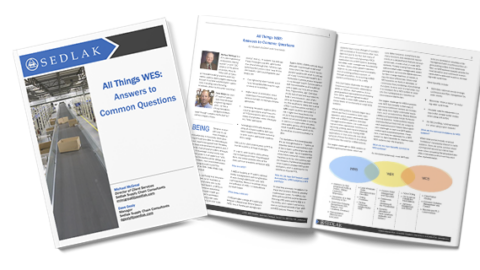Sedlak
Resources
60+ Years of Knowledge to Share
As an industry leader in supply chain consulting, Sedlak has decades of experience and knowledge to share. View our Success Stories and White Papers for a better understanding of how we can assist you with your supply chain needs.
Learn about Sedlak Supply Chain Consultants
Sedlak Supply Chain Consultants is an independent firm offering a full range of distribution and logistics services. Since 1958, we have helped more than 1,200 clients with over 2,500 projects.
Wall to Wall Automation: 6 River Systems & Sedlak
While the main focus of automation has been on optimizing the picking function, where the majority of labor is required, there are opportunities to utilize AMRs and other mechanization to improve performance throughout an operation including replenishment, Value Added Services and returns. This session of Sedlak's Supply Chain Agility 2022 Virtual Conference presents what is already possible and what is around the corner.
AMRs – Keys to Successful Selection, Implementation and Results! Locus Robotics, Siemens & Sedlak
This session of Sedlak's Supply Chain Agility 2022 Virtual Conference provides insight into successfully evaluating, justifying and implementing AMR technology. Learn how a customer went through the AMR selection process from initial investigation of AMRs through integrating them into their operations. This session will provide lessons learned, the timeframe from evaluation through the successful fully operational system and the ultimate benefits achieved.
GTP – Optimizing Fulfillment Capabilities: Swisslog, Ahold Delhaize & Sedlak
This session of the Supply Chain Agility 2022 Virtual Conference provides an overview of GTP technology. Learn how Ahold Delhaize/Peapod Digital Labs went through the GTP selection process from initial investigation of GTPs through integrating it into their operations. This session will provide lessons learned, the timeframe from evaluation through the successful fully operational system and the ultimate benefits achieved.
Performance Optimization Through Data Analytics: Easy Metrics, Ferguson & Sedlak
Having critical financial and operational data will ensure that your company has the data necessary to operate as effectively as possible. Additionally, attracting and maintaining workers is one of the biggest challenges facing operations today. While automation will help address this issue, people will always be a component of the process. In this session of Sedlak's Supply Chain Agility 2022 Virtual Conference, you will learn how implementing financial analytics with a labor management system will highlight areas of opportunity and optimize employee retention. This solution can be in place in 90-120 days.
Agile Material Handling using AGVs: Dematic, McCormick & Sedlak
This session of Sedlak's Supply Chain Agility 2022 Virtual Conference provides an overview of AGV technologies. Topics include what equipment options are available, how to select the best option, where they are best applied, the path to integrate them into an operation, factors to consider in justification, and case studies.
DC Design for Pharmaceutical Network
Coming in under budget, we met one client’s standards for capital return on investment by creating a new distribution center operations model which was replicated network-wide. This enabled the client to handle large volumes, accept late-day customer orders for next morning delivery, and achieve higher overall throughput with fewer facilities, all while maintaining customer service levels.
Warehouse Optimization for Orvis
We helped Orvis achieve faster pick / pack times, reducing cost-per-unit (CPU), shortened warehouse to customer delivery times, reduced dependency on labor year round and especially during Q4 peak season, and incentivized labor performance above engineered standards.
Distribution Automation for Northern Tool
Sedlak provided project management from initial concept planning through start-up, assisted in planning and implementation of improved operational methods and practices, developed facility layout to improve flows and optimize use of space throughout current and expanded facility and facilitated conversion of warehouse transactions to the new Manhattan WMS.
Bringing McCormick Distribution In-House
McCormick hired Sedlak to bring distribution operations in-house from two different 3PL providers. They also engaged with Sedlak to resolve capacity issues in their distribution network.
Improved Material Handling for Costco
Sedlak used a combination of on-site operational flow observations, management interviews and data analysis to gain an understanding of Costco's operation. We incorporated an interactive and collaborative approach among the COSTCO team.
Distribution Center Design for Chick-fil-A
We performed a data analysis, conceptual evaluation, ROI estimations, layout design, budget development, and preparation of RFP documents for potential suppliers.
DC Expansion & Automation for Buyers
Buyers enlisted Sedlak to conduct two separate, related efforts to optimize operations/fulfillment and free up manufacturing space that was being consumed by DC operations.
Centralized Distribution for AboutHealth
AboutHealth engaged Sedlak to identify potential opportunities for the AboutHealth owners to consolidate the distribution of their medical supplies.
Consolidation Strategy for avantor
VWR International, now avantor, is a global laboratory supply and distribution company who reached out to us for assistance in developing an appropriate facility concept and material handling solutions design for combined operations in a new greenfield distribution center. Our design for the facility layout and operations plan maximized the effectiveness of the proposed material handling system and included a two-stage implementation plan that balanced investment with planned growth.
Supply Chain Strategy for Vitacost
Our client, Vitacost.com, an e-commerce company that sells vitamins and supplements, had a west facility not performing as expected. Not only did we deliver an improvement plan for their west facility, but we offered a project management plan, including a timeline, budget and vendor for their Midwest facility as well.
LEED Certified Distribution for VF
Sedlak and VF have been trusted partners since 1960. We have completed 33 projects for them over the last sixty years.
Picking Efficiency for UPS
Process efficiencies at a client footwear facility in Kentucky were falling short of expectations, and our analysis led to recommendations which allowed for better utilization of pick towers and the sorter as well as introduction of Speed Cell shelving projected to double order processing capacity, dramatically reduce pick travel time and labor, decrease the size of the pick area and create a centralized packing and shipping staging area. An additional operational improvement enhanced WMS functionality which streamlines replenishment, increases picks per hour and realizes time efficiencies.
U.S. Antarctic Program/McMurdo Station
Our client, McMurdo Station, needed a plan for consolidating all warehousing of inventory and assets to eliminate aging infrastructure, address the challenges of extreme conditions and reduce staffing requirements on the continent of Antarctica. After analysis, we were able to identify opportunities to reduce warehouse space by 65%, reduce staff by 25% and improve the client’s upstream supply chain.
ERP/WMS Solution for Optimal
Sedlak assisted in the requirements development, cost and benefit evaluation, vendor selection and implementation project management of a new ERP/WMS system for The Palm Tree Group, now Optimal. Our team managed the successful, on-time and on-budget implementation of Palm Tree Group’s entire information support systems, including full integration, volume, stress testing and user acceptance testing prior to readiness assessment and go-live.
Process Flow Workshop for Regional Healthcare System
Our client, a regional healthcare system, needed a supply chain strategy to optimize their cash flow, reduce and manage their inventory, improve their point of use replenishment, optimize their FTE and clean up their MMIS. Our recommendations, after a lengthy assessment of their supply chain, could potentially save the company a $120K cash flow improvement and a savings of hundreds of thousands of dollars per year.
Project Management - Pharmaceutical DCs
Coming in under budget, we met one client’s standards for capital return on investment by creating a new distribution center operations model which was replicated network-wide. This enabled the client to handle large volumes, accept late-day customer orders for next morning delivery and achieve higher overall throughput with fewer facilities, all while maintaining customer service levels.
Supply Chain Configuration for Perrigo
Sedlak recommended an optimum network configuration to Perrigo, a distributor of pharmaceuticals and nutritional products, identifying the best flow of products throughout multiple facilities within their network and providing them with a sensitivity analysis of solutions to increase their understanding of the impact other possible acquisitions and changes might have on their business.
Facility Expansion for PEL Supply
Needing optimization of its distribution network, PEL Supply turned to Sedlak. We recommended operational enhancements focused on improved throughput, service and costs and provided a facility expansion plan providing optimal size, layout and equipment with specifications and bid packages for the building, material handling equipment and systems and documents outlining supporting IT systems and technologies.
Velocity Based Storage for Owens Corning
Sedlak completed four projects for Owens Corning over a four year period, including a product transport study and network analysis for their Waxahachie, TX site and a conceptual design / layout and network analysis for their Newark, NJ site.
Automated DC for Marmot
For the client, Sedlak evaluated potential automation with integration into a new SAP WMS and designed future growth and potential acquisition of new brands, reducing the need for EWM host system modifications, lowering programming and engineering costs and allowing easy future upgrades, quicker implementation, and less complex security and training.
3PL Analysis for Lulu's
Sedlak developed a master blueprint for our client’s retail boutique operations based on a five-year business plan. We designed a new network model to improve processes and product flow and supported all recommended options by a capital investment and ROI evaluation.
Distribution Network Redesign for Academic Healthcare Institution
Sedlak made recommendations to our client, one of the largest academic institutions in the U.S., specializing in advanced biomedical research and graduate-level education in healthcare and the life sciences, which were projected to achieve or $1 million in operating cost savings.
Optimizing Last Mile Delivery for Academic Healthcare Institution
Sedlak's analyses and recommendations for our client, a large academic institution, dramatically reduced their need for new transportation vehicles and delayed the necessary capital expenditure for the smaller number of vehicles that were eventually required.
Distribution Strategy for GlaxoSmithKline
We recommended a preferred 3-DC option and a preferred 4-DC Option to a multinational pharmaceutical, biologics, vaccine and consumer healthcare company, each equally reducing transportation expenses. In addition, we recommended network options that maintained targeted service levels for both.
Transportation Analysis for Fresh Mark, Inc.
Sedlak provided FreshMark, a subsidiary of Sugardale Foods, with an optimal equipment concept and layout to reduce product touches and related labor costs. We also identified additional improvement opportunities to consider with the development of a master campus plan to balance efficiencies across functions and locations.
Automated DCs for DSW
More than a Decade of Projects: New Automation & Systems, Brownfield Facilities, and Uninterrupted Operations
Robotic System at Crocs
We have worked on multiple initiatives for Crocs and continue to do so today. From Increased efficiency in retail and wholesale processing efficiency through use of a bomb-bay sorter to the outfitting of a pop up facility to handle a large growth in ecommerce demand, we continue to be a valued trusted partner of Crocs.
Distribution Network Model for Blood Donation
Sedlak reduced distribution network costs by 30% for a large provider of blood and blood products and then supported the alignment of the organization and four of their affiliates to the new integrated distribution approach.
Distribution Network Study for Benjamin Moore
We Saved Benjamin Moore over $5M with the development of a long-term distribution network which immediately improved their capacity.
DC Expansion and Retrofit for Knitwell Group
Sedlak and Knitwell Group, formerly Ascena Retail Group, have a trusted business relationship that starts but does not end with our conversion of their retail replenishment facility in Greencastle, IN, to ecommerce fulfillment for multiple brands currently being serviced out of five 3PLs.
Structuring the Supply Chain for Growth: Helping Medical Products Manufacturers Thrive
Widespread disruptive change in the healthcare industry is forcing medical product manufacturers to take a fresh, critical look at how their supply chain networks must respond to cost pressures and shifting patterns of supply and demand. In this white paper, we explore the overarching trends that are upending the healthcare supply chain; why a formal network design capability is becoming essential to medical product manufacturers’ competitiveness and growth; and how manufacturers can develop a strategic design capability to position themselves for success.
Found Money: How to Clean Up Preference Cards to Cut Inventory Spend and Boost Margins
Heightened cost pressures continue to force hospitals to look for ways to reduce wasted spend. In fact, in a recent survey, hospital executives said finding cost savings to meet their current-year objectives is one of their top challenges. In this whitepaper, we explore how the supply chain—more specifically, inventory and order management processes—is a natural place to look for savings.
Demystifying Freight Spend: How Shippers can Get a Better Handle on Their Carriers
Transportation is a critical element of a company's overall supply chain and plays a major role in customer satisfaction. But it's also a major cost center. This makes effective management of transportation all the more vital to a company's profitability. However, carrier rates and other charges can be incredibly complex, making it extremely difficult for a shipper to truly know what it's paying--and why.
Optimizing Transportation's Spend and Impact: Four Fundamental Step
The complexities of transportation cause many companies to treat this segment of the supply chain as an afterthought. Even very sophisticated operations sometimes address transportation in a silo, inadvertently neglecting the significant cost savings and performance improvement they could achieve with a broader perspective. In this paper, we explore why managing transportation holistically is critical to overall business performance and review four key actions companies can take to get the most from this critical area of the business.
Bring Goods to the Worker: What You Should Know About Goods-to-Person Fulfillment
Distribution executives are increasingly looking for more efficient solutions to minimize wasted time between picks and increase the number of orders processed per person. Not surprisingly, many of them are embracing a goods-to-person fulfillment approach to achieve higher efficiencies.
Automating Warehouses and Distribution Centers to Reduce Your Dependence on Labor
Today’s growth in e-commerce fulfillment is converging with record full employment levels and a diminishing skilled labor workforce. As a result, retailers, wholesalers, and industrial distributors are looking for creative ways to reduce their dependence on labor. This situation has spurred a renewed interest in warehouse automation and robotics and the systems that drive these solutions.
The Time Has Come to Consider Robots in Your Distribution Operation
For a few years now, we have been hearing about the future of robots in distribution centers and the roles they would play. The fact of the matter is, until very recently, we could not recommend robots to our clients because systems, controls, and applications were just not mature enough, and we couldn’t show them a real-life example of a happy customer with robots deployed. There were a few exceptions, but it was difficult to show the ROI and justification for systems that seemed expensive and experimental. Now things are different. The time has come to consider robots in your distribution operations.
All Things WES: Answers to Common Questions
One of the most confusing and misunderstood technologies, which has been a buzz word for several years now, is the Warehouse Execution System, or WES. In today’s world, E-commerce operations have continually increased in both percentage of many retailer’s businesses, and demands for reducing order cycle times (commonly referred to as the “click-to-ship” metric). IT systems that address these challenges and also optimize the flow of work through their fulfillment systems have become a critical need for the Retail industry.

